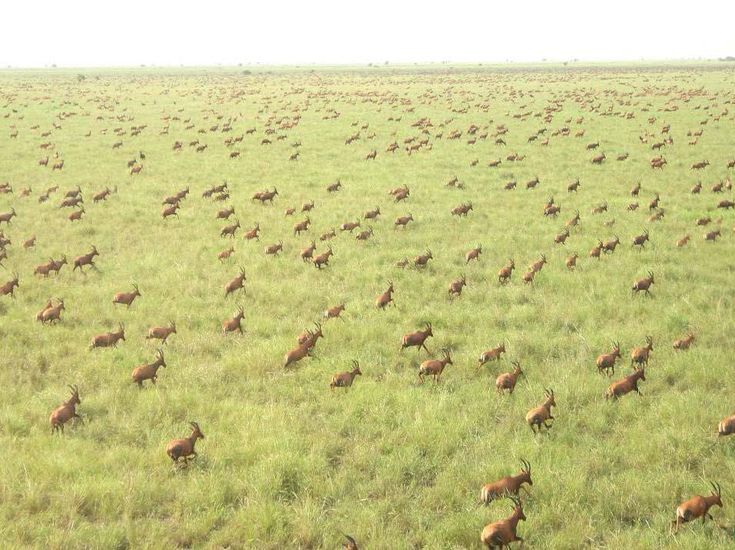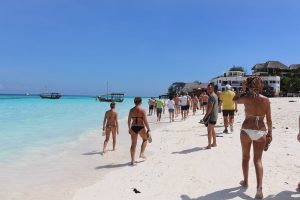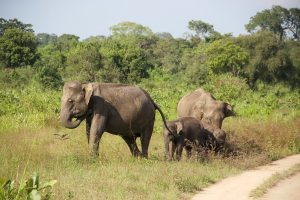What to expect on a South Sudan Safari?
What to expect on a South Sudan Safari? A safari in South Sudan is a truly unique and off-the-beaten-path experience. South Sudan is one of the least visited safari destinations in Africa, offering a sense of discovery and adventure that is hard to find elsewhere. While tourism infrastructure is still developing due to the country’s history of conflict, South Sudan’s wildlife, landscapes, and cultural richness make it an extraordinary destination for those seeking something truly different.
Here’s what you can expect on a South Sudan safari:
1. Wildlife and National Parks
South Sudan is home to some remarkable wildlife reserves and national parks, many of which remain largely unexplored.
- Boma National Park: One of the largest parks in Africa, Boma National Park is famous for its massive migration of white-eared kob antelope, which rivals the Great Migration in East Africa. This migration includes hundreds of thousands of animals, including tiang and mongalla gazelles. You may also see elephants, buffalo, giraffes, lions, and leopards.
- Bandingilo National Park: Located near the White Nile, Bandingilo is known for being the habitat of migrating antelopes and other wildlife like giraffes, buffalo, and predators like lions and hyenas.
- Southern National Park: A lesser-known park, it’s teeming with buffalo, elephants, giant forest hogs, and several antelope species.
- Nimule National Park: Situated along the Nile River near the Ugandan border, Nimule is smaller but scenic, with opportunities to see hippos, elephants, and crocodiles.
The country’s national parks are incredibly raw, with little commercialization, meaning you can explore these vast landscapes without the crowds seen in Kenya or Tanzania.
2. Cultural Experiences
South Sudan is a mosaic of different ethnic groups, and a safari here provides a rare chance to interact with diverse communities.
- The Dinka Tribe: Known for their cattle-herding traditions, the Dinka people live along the Nile and have a deep connection with their livestock. Visiting a Dinka cattle camp offers insight into one of the world’s oldest pastoral cultures.
- The Toposa Tribe: In the southeastern part of the country, you can visit the Toposa, who have unique traditions, including intricate body scarification and vibrant jewelry.
- Other Tribes: The Murle, Nuer, and Bari are other groups with distinct ways of life. A visit to their villages may offer opportunities to learn about their ceremonies, dances, and communal living.
3. Adventure and Remote Travel
South Sudan safaris are for those looking for rugged, adventurous travel.
- Road conditions can be rough, and access to remote areas often requires 4×4 vehicles. There is limited infrastructure, so the experience is often more about overland adventure than luxury.
- Limited lodges: Accommodations in national parks are minimal or nonexistent. Most safari experiences will involve mobile camps or basic lodging. Self-sufficient camping may be necessary in the more remote areas.
- Wild, untamed landscapes: South Sudan’s landscapes include savannahs, wetlands, and vast grasslands. The Sudd, one of the largest wetlands in the world, is a key ecological feature, formed by the White Nile River and home to rich birdlife.
4. Bird Watching
South Sudan has a wealth of birdlife, particularly in the Sudd wetlands. Birders can expect to see species like:
- Shoebills
- African fish eagles
- White pelicans
- Crowned cranes
- Marabou storks
With its rivers, swamps, and open grasslands, South Sudan is a haven for birds, many of which are rare or difficult to spot in other African countries.
5. Pristine and Untouched Ecosystem
One of the most exciting aspects of a South Sudan safari is the sense of exploring uncharted territory. Much of the country’s wildlife and wilderness areas remain untouched by mass tourism, providing a sense of isolation and exclusivity. Conservation efforts are still emerging, which means you may witness wildlife in a raw, undisturbed setting.
6. Challenges and Considerations
- Safety: South Sudan has experienced instability, so it’s crucial to check current conditions and travel advisories before visiting. Going with a reputable guide or tour operator who knows the region well is strongly recommended.
- Logistics: Due to limited infrastructure, planning a safari in South Sudan requires coordination, especially with transport, lodging, and permits. Flights into Juba (the capital) are the main entry point, and from there, logistics often involve private charters or long drives.
- Health Precautions: As with much of sub-Saharan Africa, malaria is a risk, so proper precautions are essential. Vaccinations for diseases like yellow fever are also recommended.
- Seasonality: The rainy season (April to October) can make travel difficult as roads become impassable. The dry season (November to March) is generally the best time to visit.
7. A Truly Wild Experience
Unlike more polished safari destinations, South Sudan offers an authentic, wild experience where wildlife roams free, and the landscapes feel untouched by modern civilization. It’s ideal for seasoned travelers who prioritize raw nature and cultural encounters over luxury.
Final Thoughts
A South Sudan safari is a journey into Africa’s untamed heart, offering some of the most adventurous and immersive wildlife and cultural experiences on the continent. If you’re willing to navigate the logistical challenges and prioritize adventure over comfort, the rewards are immense. You’ll get to explore a destination that few travelers have experienced and witness some of the continent’s most remarkable wildlife events, like the massive kob migration.




